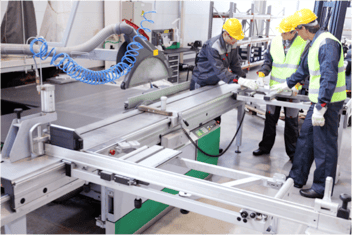WLS Stamping Culture Shift Improves Workforce Retention
The hiring difficulties of the last few years have caused many manufacturers to reevaluate their operations and hiring processes, looking for any way to improve retention or gain an edge in this hyper-competitive labor market. For small and medium-sized manufacturers that may not be able to continually boost wages and offer the bonuses of their larger counterparts, this internal evaluation is particularly critical.
Highland Heights-based WLS Stamping is one example of a business finding creative ways to improve hiring and retention. Craig Kotnik, WLS Companies president, and his team are intentionally working to build an improved company culture.
Kotnik referenced the recent past years' hiring difficulties served as his impetus to evaluate company culture. “Labor has greater options than ever before, so we needed to adjust to attract new employees and retain our existing ones. We needed an answer to the question of ‘Why stay here?’” Kotnik said.
Several WLS leaders attended a company culture seminar, and from there they began considering culture as a subject for substantive change. After thorough research and vetting, Kotnik and his team chose to work with a consultant who would develop and implement a methodology for culture improvement.
Before this effort, Kotnik says his employees would not have been able to answer: What is WLS’ culture? "There was no practice for what we wanted our culture to be," Kotnik says. "We needed to define what we wanted to see and communicate that throughout the organization so that our employees understood where we are going.”
The culture building-process at WLS was intense and time-consuming. Leaders from across the organization spent time with the consultant identifying a list of organizational fundamentals that define what it means to be a WLS employee.
After completing the identification process, WLS committed to a half-day rollout session at both of their Cleveland-area facilities. Craig and his leadership team wanted to be sure that each employee had the chance to ask questions and understand why it was so important to the organization to dedicate time and resources to this effort.
From there, the process morphed into a weekly focus on a specific fundamental, complete with a write-up from Kotnik on what that fundamental means to him, professionally and personally. All employees have access to an app where weekly check-ins occur, and each team within the company leads their weekly meetings with a focus on that week’s fundamental.
The WLS Culture is a part of the orientation for new employees, and Kotnik is looking forward to the next step when other leaders on his team – and eventually employees throughout the organization – have the opportunity to speak about what each fundamental means to them.
Kotnik was transparent about the time this commitment required. He has spent time each week thinking deeply about what to share with his staff regarding each fundamental.
Aware that WLS may not see immediate results from this culture shift, the company is committed to using metrics to track employee response and continually iterate the process to find what parts work best for the WLS team. Kotnik also acknowledged his hope to eventually incorporate this cultural discussion into conversations with WLS’s customers, with the hopes that an improved employee experience will lead to better outcomes for customers.
Kotnik’s commitment to these efforts, to transforming WLS into an employer people want to work for years to come, is clear. His passion shines through when he shares his desire to help employees with their personal interests and invest in the causes WLS employees care about. This attitude, of putting employees first and investing in the whole person, is a recipe Craig Kotnik and his leadership team are taking to heart.
And while the culture-building WLS has taken on may not work for every company, individual lessons and calls to action are available in this story for all manufacturers to heed: commitment to an employee-friendly culture and continued investment in each person will manifest success in the current labor market.




